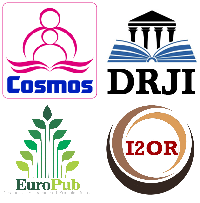Information Without Mass: Theoretical Limits of the Mass-Energy-Information Equivalence
Abstract
The mass-energy-information (M/E/I) equivalence hypothesis states that physical information has mass and can be directly related to energy via an extended form of the Landauer principle. Although this idea is theoretically attractive, it introduces serious contradictions into established thermodynamic and quantum principles. We show that the representation of information as a material entity violates the third law of thermodynamics and is inconsistent with the behavior of entropy at low temperatures. From a quantum perspective, information is nonlocal and manifests itself in correlations rather than in individual particles, making interpretations that imply mass or a carrier physically untenable. Moreover, the implications of the Page curve and the holographic principle emphasize that information acts as a constraint on the possible boundary conditions of a system rather than as a localized physical quantity. Experimental results from quantum teleportation and Bose-Einstein condensates support this view: information changes without measurable mass transfer. We conclude that information plays a fundamental role in physics, not as a substance, but as a structure — governing what is possible, not what is material.
References
Barends, R. et al. (2014). Superconducting quantum circuits at the surface code threshold for fault tolerance. Nature, 508, 500–503.
Bejan, A. (2016). Advanced Engineering Thermodynamics. Wiley. https://onlinelibrary.wiley.com/doi/chapter-epub/10.1002/9781119245964.fmatter
Bennett, C.H. (2003). Notes on Landauer’s principle. Stud. Hist. Phil. Mod. Phys., 34, 501–510. https://doi.org/10.1016/S1355-2198(03)00039-X
Bérut, A. et al. (2012). Experimental verification of Landauer’s principle. Nature, 483, 187–189. https://www.nature.com/articles/nature10872
Birman, V. (1996). Thermal effects on measurements of dynamic processes in composite structures using piezoelectric sensors. Smart Mater. Struct., 5, 379. https://doi.org/10.1088/0964-1726/5/4/001
Brillouin, L. (1956). Science and Information Theory. Academic Press, New York. https://www.physics.mcgill.ca/~delrio/courses/phys559/lectures%20and%20notes/Brillouin-Information-Theory-Ch1-4.pdf
Bouwmeester, D. et al. (1997). Experimental quantum teleportation. Nature, 390, 575–579. https://arxiv.org/abs/1901.11004
Callen, H.B. (1985). Thermodynamics and an Introduction to Thermostatistics (2nd ed.). Wiley.
Clarke, J., & Wilhelm, F.K. (2008). Superconducting quantum bits. Nature, 453, 1031–1042. https://qudev.phys.ethz.ch/static/content/courses/QSIT11/pdfs/Clarke2008.pdf
Clark, J., Savard, G., Mumpower, M., & Kankainen, A. (2023). Precise mass measurements of radioactive nuclides for astrophysics. European Physical Journal A, 59, 204. https://doi.org/10.1140/epja/s10050-023-01037-0
Dakić, B., Vedral, V., & Brukner, Č. (2010). Necessary and sufficient condition for nonzero quantum discord. Phys. Rev. Lett., 105, 190502. https://www.semanticscholar.org/reader/60e2989ff6978fc1ab0898831a06e85b894bae73
Giddings, S.B. (1992). Black holes and massive remnants. Phys. Rev. D, 46, 1347–1352. https://arxiv.org/abs/hep-th/9203059
Ghosh, S., & Shankaranarayanan, S. (2020). One-to-one correspondence between entanglement mechanics and black hole thermodynamics. Phys. Rev. D, 102, 125025. https://doi.org/10.1103/PhysRevD.102.125025
Greiner, M. et al. (2002). Quantum phase transition from a superfluid to a Mott insulator. Nature, 415, 39 44. https://qudev.phys.ethz.ch/static/content/courses/phys4/studentspresentations/mott/Greiner.pdf
Einstein, A. (1905). Zur Elektrodynamik bewegter Körper. Ann. Phys., 17, 891–921. https://users.physics.ox.ac.uk/~rtaylor/teaching/specrel.pdf
Harlow, D. (2016). Jerusalem lectures on black holes and quantum information. Rev. Mod. Phys., 88, 015002. https://journals.aps.org/rmp/abstract/10.1103/RevModPhys.88.015002
Hayden, P., & Preskill, J. (2007). Black holes as mirrors: quantum information in random subsystems. JHEP 09, 120. https://doi.org/10.1088/1126-6708/2007/09/120
Hawking, S.W. (1974). Black hole explosions? Nature, 248, 30–31. https://www.nature.com/articles/248030a0
Hawking, S.W. (1976). Breakdown of predictability in gravitational collapse. Phys. Rev. D, 14, 2460–2473. https://journals.aps.org/prd/abstract/10.1103/PhysRevD.14.2460
Henderson, L., & Vedral, V. (2001). Classical, quantum and total correlations. J. Phys. A, 34, 6899 6905. https://www.semanticscholar.org/reader/07fa481b63d97a97b29ca7db25a2a8a94f6ca746
Horowitz, G.T., & Maldacena, J.M. (2004). The black hole final state. JHEP, 02, 008. https://arxiv.org/abs/hep-th/0310281
Hubeny, V.E., Rangamani, M., & Takayanagi, T. (2007). Covariant holographic entanglement entropy proposal. JHEP, 07, 062. https://arxiv.org/abs/0705.0016
Jun, Y. et al. (2014). High-precision test of Landauer principle in a Feedback Trap. Phys. Rev. Lett. 113, 190601. https://journals.aps.org/prl/abstract/10.1103/PhysRevLett.113.190601
Kish, L. B. (2007). "Gravitational mass" of information? Fluctuation and Noise Letters, 7(4), C51-C68. https://doi.org/10.1142/S0219477507004148
Kish, L. B., & Granqvist, C.-G. (2013). Energy requirement of control: Comments on Szilard's engine and Maxwell's demon. EPL (Europhysics Letters), 98(6), 68001. https://doi.org/10.1209/0295-5075/98/68001
Ladyman, J., Presnell, S., Short, A.J. & Groisman, B. (2007). Logical and thermodynamic irreversibility. Stud. Hist. Phil. Mod. Phys., 38, 58–79. https://www.researchgate.net/publication/372468953_Testing_the_Minimum_System_Entropy_and_the_Quantum_of_Entropy
Landau, L.D. & Lifshitz, E.M. (1976). Mechanics (3rd ed.). Pergamon Press, Oxford. https://eclass.uoa.gr/modules/document/file.php/PHYS181/%CE%92%CE%B9%CE%B2%CE%BB%CE%B9%CE%B1/L%20D%20Landau%2C%20E.M.%20Lifshitz%20-%20Mechanics%2C%20Third%20Edition_%20Volume%201%20%28Course%20of%20Theoretical%20Physics%29-Butterworth-Heinemann%20%281976%29.pdf
Landauer, R. (1961). Irreversibility and heat generation in the computing process. IBM J. Res. Dev., 5, 183–191. https://worrydream.com/refs/Landauer_1961_-_Irreversibility_and_Heat_Generation_in_the_Computing_Process.pdf
Landauer, R. (1991). Information is Physical. Phys. Today, 44, 23–29. https://www.w2agz.com/Library/Limits%20of%20Computation/Landauer%20Article,%20Physics%20Today%2044,%205,%2023%20(1991).pdf
Lloyd, L. (2000). Ultimate physical limits to computation. Nature, 406, 1047–1054. https://arxiv.org/pdf/quant-ph/9908043
Maldacena, J.M. (1998). The Large N limit of superconformal field theories and supergravity. Adv. Theor. Math. Phys., 2, 231-252. https://arxiv.org/abs/hep-th/9711200
Maldacena, J. & Susskind, L. (2013). Cool horizons for entangled black holes. Fortschr. Phys., 61, 781–811. https://onlinelibrary.wiley.com/doi/abs/10.1002/prop.201300020
Morelli, R. (2024). Hawking Radiation Experimentally Verified? Can the Information Paradox be resolved? IPI Letters. https://www.researchgate.net/publication/384325883_Hawking_Radiation_Experimentally_Verified_Can_the_Information_Paradox_be_resolved
Mougeot, M. et al. (2021). Mass measurements of 99–101In challenge ab initio nuclear theory of the nuclide 100Sn. Nature Physics, 17, 1099–1103. https://doi.org/10.1038/s41567-021-01280-4
Newton, I. (1687). Philosophiæ Naturalis Principia Mathematica. Royal Society, London. https://ia801604.us.archive.org/1/items/newtonspmathema00newtrich/newtonspmathema00newtrich.pdf
Nielsen, M.A., & Chuang, I.L. (2000). Quantum Computation and Quantum Information. Cambridge Univ. Press. https://archive.org/details/QuantumComputationAndQuantumInformation10thAnniversaryEdition/page/n65/mode/2up
Nomura, Y. et al. (2013). Black holes, information, and Hilbert space for quantum gravity. JHEP, 11, 063. https://link.aps.org/accepted/10.1103/PhysRevD.87.084050
Ollivier, H., & Zurek, W.H. (2001). Quantum Discord: A Measure of the Quantumness of Correlations. Phys. Rev. Lett., 88, 017901. https://journals.aps.org/prl/abstract/10.1103/PhysRevLett.88.017901
Page, D.N. (1993). Information in black hole radiation. Phys. Rev. Lett., 71, 3743–3746. https://arxiv.org/abs/hep-th/9306083
Papadimitriou, I., & Skenderis, K. (2004). AdS/CFT correspondence and Geometry. arXiv preprint hep-th/0404176. https://arxiv.org/abs/hep-th/0404176
Pauli, W.F. (1973). Thermodynamics and the Development of Physical Thought. Dover. https://toaz.info/doc-view-3
Plenio, M.B. & Vitelli, V. (2001). The physics of forgetting: Landauer's erasure principle and information theory. Contemp. Phys., 42, 25–60. https://arxiv.org/abs/quant-ph/0103108
Popescu, S. (2014). Nonlocality beyond quantum mechanics. Nat. Phys., 10, 264–270. https://doi.org/10.1038/nphys2916
Rovelli, C. (1996). Relational Quantum Mechanics. Int. J. Theor. Phys., 35, 1637–1678. https://doi.org/10.1007/BF02302261
Ryu, S., & Takayanagi, T. (2006). Holographic derivation of entanglement entropy from AdS/CFT. Phys. Rev. Lett., 96, 181602. https://arxiv.org/abs/hep-th/0603001
Shannon, C.E. (1948). A Mathematical Theory of Communication. Bell Syst. Tech. J., 27, 379–423. https://onlinelibrary.wiley.com/doi/10.1002/j.1538-7305.1948.tb01338.x
Susskind, L. (1995). The World as a Hologram. J. Math. Phys., 36, 6377–6396. https://arxiv.org/abs/hep-th/9409089
’t Hooft, G. (1993). Dimensional reduction in quantum gravity. arXiv:gr-qc/9310026. https://arxiv.org/abs/gr-qc/9310026
Vopson, M. (2019). The mass-energy-information equivalence principle. AIP Adv., 9, 095206. https://pubs.aip.org/aip/adv/article/9/9/095206/1076232/The-mass-energy-information-equivalence-principle
Wheeler, J.A. (1990). Information, Physics, Quantum in Complexity, Entropy and the Physics of Information (W.H. Zurek, Ed.). Addison-Wesley. https://philpapers.org/archive/WHEIPQ.pdf
Yang, B. et al. (2019). Cooling and entangling ultracold atoms in optical lattices. Science 369, 550-553. https://doi.org/10.1126/science.aaz6801
Zeilinger, A. (2005). The message of the quantum. Nature, 438, 743. https://citeseerx.ist.psu.edu/document?repid=rep1&type=pdf&doi=d4798f6e5f4fa53dff5d8ab18b877f25df70407c
Zurek, W.H. (2003). Decoherence, einselection, and the quantum origins of the classical. Rev. Mod. Phys., 75, 715–775. https://arxiv.org/abs/quant-ph/0105127
Copyright (c) 2025 Boris M. Menin

This work is licensed under a Creative Commons Attribution 4.0 International License.


 ISSN
ISSN 











